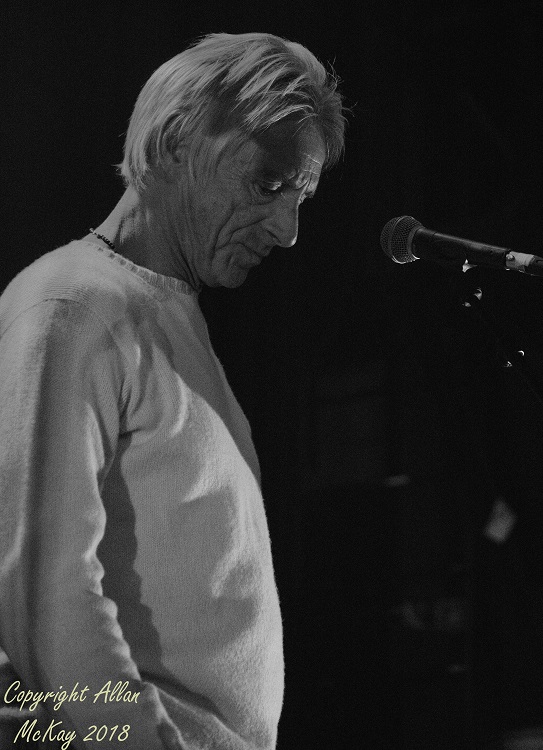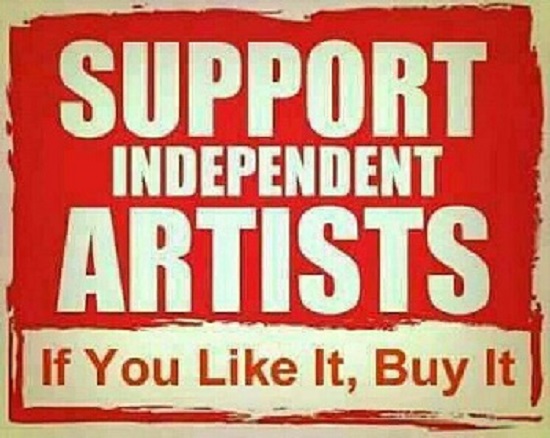
The Guardian published an article a couple of weeks ago by Tim Burgess of The Charlatans about the state of the music business in the light of Brexit, streaming and downloads. It’s an interesting read as far as it goes and it set the cogs whirring about why we got here, where we go next and will it be better or worse, or just different.
In my lifetime, the music business has been turned upside down. In the seventies, bands went out on tour to build up a following and to promote singles and albums, which is where the real money was. If you’ve survived this long and remember all this, bear with me, it’s worth getting some historical context. No internet, no mobile phones, only three TV channels and (until October 1973) no commercial radio. So you were left with the pirates like Caroline and the erratic reception of overseas stations like Luxembourg to let you know about new music. And the music press…
Every week I bought the NME, Melody Maker and Sounds and my paper round meant I could sneak a look at Blues & Soul and Disc/Disc and Music Echo as well. By 1973, with a bar job and a Saturday job with an entertainment agent booking acts for local pubs and clubs, I had a few bob to spend on some of the music I was reading about. Add the cost of my print habit to the cost of buying an album (about five percent of the average weekly wage in the mid-seventies) and being into music was a real financial commitment (even if you took the risk of doing a few temporary swaps with your mates to dip into their choices).
Buying music in the seventies wasn’t just an investment in listening to a piece of music. You exchanged your hard-earned (cash of course) for something physical that you carried home in a bag before lowering it on to the turntable, gently caressing the vinyl with the stylus and waiting for a glorious noise to erupt from the speakers. But let’s just rewind that a few minutes. If you bought an album and you were taking public transport home, you had the chance to look at the album artwork as well. A good album sleeve was so much more than a bit of on-shelf advertising; a twelve-inch square format created opportunities for quality photography and graphic design to enhance the musical content of the package. When it worked, it was an extra visual dimension to a piece of aural art:
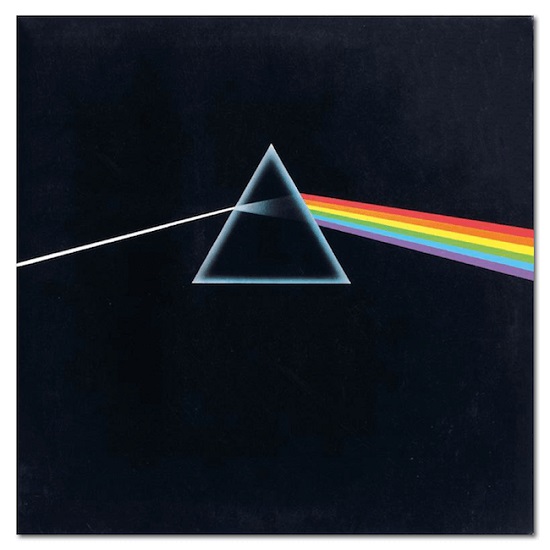
When it didn’t, it looked a lot like this (which proves that you can’t get it right all the time):
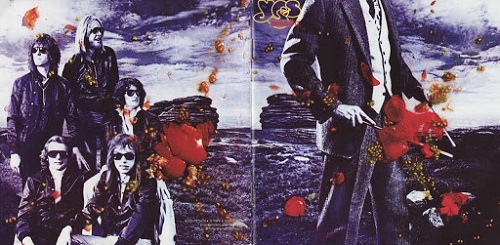
The gatefold sleeve doubled up the visual real estate (exploited perfectly on Thin Lizzy’s “Live and Dangerous” double album with a shedload of Chalkie Davies pics all over the outer and inner sleeves of the album):
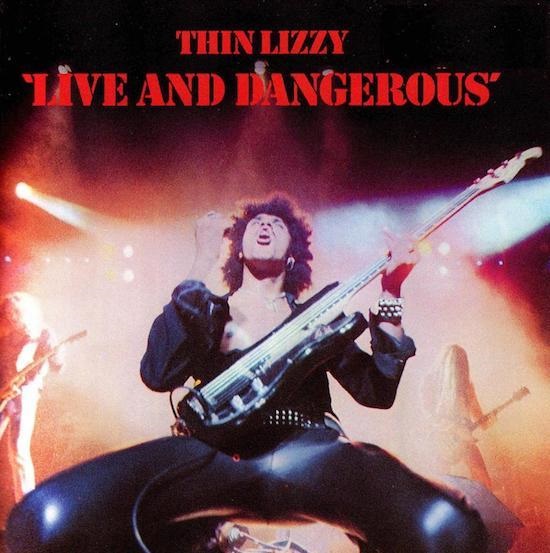
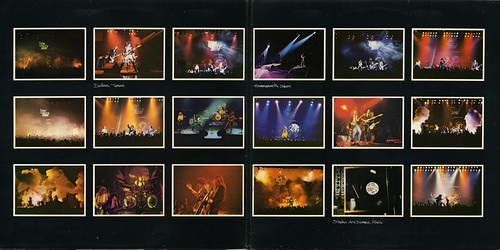
Designers started to exploit die-cut sleeves and all sorts of interesting innovations; PiL’s “Metal Box” looked really clever, but only if you hadn’t seen The Small Faces’ “Nut Gone Flake” packaging twelve years earlier.
The visuals were only part of the album experience; you could get a lot of text on a sleeve, particularly if you had a printed inner sleeve or three as well. There was all the obvious geek stuff; musicians involved, instruments played (or not played if you were Queen) and lyric sheets, but some bands made a real effort; UB40’s cover for the first album “Signing Off” in 1980 was a copy of the unemployment benefit attendance card, they’d been filling in before they broke through. Ten years later, Squeeze released a live album with a boxing concept, “A Round and A Bout” with a little bonus – they listed every gig they’d done between 1974 and 1990 on an insert with the album. Thanks guys, you’ve no idea how useful that’s been to me over the years. Seriously.
I’m sure you get the message by now. During the first vinyl era, the experience was about much more than just listening to the music. You could carry an album around at school as a sign of your taste and discernment and to impress the other gender (I pitied the guys who carried Groundhogs and Genesis albums, but that’s Darwinism for you). It was a bit like creating a mixtape a few years later and a playlist many years later. Or drinking bottled designer lager in the eighties. If you were a fan of music in the seventies or eighties you were committed and attached to it; it had a financial and emotional value. And it had a longer lifespan; since the mid-nineties, the norm is for singles and albums to achieve their highest chart position in the first week of release, but fifty years ago the climb to the top of the charts could take weeks (and probably a few bulk purchases in chart return shops to help it along).
This isn’t a dewy-eyed, rose-tinted trip down memory lane. The seventies and eighties weren’t perfect; the music business was still a business, but it was one where labels invested in bands with a view to development over several years. A moderately successful band writing their own material could make a living for a few years with royalties on sales, radio, juke box and club plays and independent labels were few and far between. Things are a bit more polarised these days; the business only supports guaranteed winners and everyone else has to do their own thing. Time for a bit of a polemic: the technology that enabled the digital revolution degraded our experience of music. Listening to compressed audio on inadequate playback systems is the norm for most people now, despite the vinyl comeback, and the majority of listeners don’t pay any attention to artwork, credits or sleeve notes. We’ve walked blindfold into accepting a gradual erosion of the musical experience in the name of progress and fashion. We also have at least one generation that doesn’t believe in physical musical formats and certainly doesn’t believe in paying for them.
Fortunately the same digital technology that devalued music by making no-degradation copying possible, then compression, along with affordable storage and massive improvements in internet bandwidth, have enabled affordable home recording. Technological improvements cut both ways and musicians are a resourceful bunch; if you can’t get a deal with a major label, what have you lost? You don’t need access to a studio; you can set up at home. You don’t need access to a major label’s mastering and pressing facilities; you can find any number of those online. You don’t need a distribution network; you can load your music up to download and streaming services and make peanuts, or you can sell CDs and albums on your website by mail order and alongside other merchandise at your gigs.
In normal times, this isn’t a bad business model; you might be able to stay afloat if you have another job, have good merchandise to sell on tour, or both. And along comes lockdown; no gigs and no pop-up shop opportunities. I wish I could honestly say that I recommended live streams, but it’s not for me; I really miss the eye contact and (selfishly) I miss the opportunity to take pictures at gigs. If it works for you, that’s great; enjoy it and make a contribution; I’ll be waiting for the moment when live music re-emerges after this terrible disease is brought under control.
Me, I’ll continue to avoid the mainstream by buying (in order of preference) vinyl or CDs directly from artists’ websites, from independent record shops and at gigs. Two people I know have opened vinyl shops in the last few years and both are succeeding despite the current trading situation; long may they continue.
And that resourcefulness and creativity that musicians always demonstrate wasn’t going to be stifled by any number of lockdowns; no way. All of those skills developed and equipment bought to set up home studios have been subtly repurposed to enable musicians to collaborate by sharing audio and video files online. I don’t know any musicians who see this as an ideal situation, but, like solitaire, it’s the only game in town. After nearly a year and millions of audio files bouncing around the internet, albums that were in progress have been completed remotely and albums have been conceived, gestated and born. It doesn’t matter how difficult you make life for musicians (or artists generally), they will always find an outlet.
Whenever we reach the new normal, whatever that may be, spend your money in a way that benefits the people making the music you love. Buy physical copies of music either directly from bands or from independent record stores – there are loads of them. Most importantly, get yourself out to as many gigs as possible. I’ll see you at the front.
 We’ve given Allan some interesting assignments this year and he’s also managed to blag his way into a few others. He’s had an interesting year and he’s desperate to tell you about some of the highlights. Why don’t we just let him get on with it?
We’ve given Allan some interesting assignments this year and he’s also managed to blag his way into a few others. He’s had an interesting year and he’s desperate to tell you about some of the highlights. Why don’t we just let him get on with it?
“Rock ‘n’ Roll Twilight” cover
It’s not a big secret but, in case you didn’t know, our live reviewer from Up North, and myself have been friends since meeting on our first day at University. We’ve had a lot of interesting times together and separately but nothing quite like this year (Steve’s party piece is to almost, but not quite, get us into conflict with people that look like they could kill us just by looking at us).
Steve’s an unashamed rampant enthusiast; once he decides to tackle something he makes Norman Hunter look like a six-week old kitten (70s football reference – Ed). This year’s big project has been writing and publishing. Skip back a sentence and you’ll see the word enthusiast; even with adjective ‘rampant’ to help it along, it’s not the full picture. He’s a force of nature; a hurricane or a whirlwind maybe. So it’s no surprise when he announced that he was publishing not one, but two, books at the end of 2018. “On the Radio”, co-authored with his brother Paul, which is autobiographical and takes us from Steve’s birth to the point where Steve and Paul are granted the licence for High Peak Radio; it’s a great read. The other book, “Rock ‘n’ Roll Twilight” looks at live music from the viewpoint of someone got the bug in the 70s and has been a fan ever since. Many of the chapters initially appeared as Music Riot reviews, but that’s not the reason it’s one of ‘pinch myself’ moments of 2018.
In May of this year Steve gave me the commission for a cover shot for the book. As luck would have it, three days later, I saw exactly the shot he needed backstage at a Talentbanq gig (more about them later). Anyway after all the publication issues were resolved, I was able pick up a book with one of my photos on the cover. It was quite a moment.
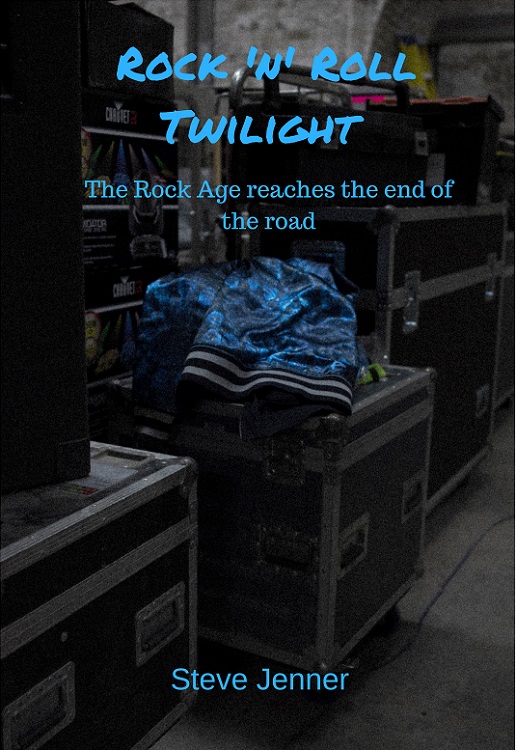
Martin Belmont photo
I’m a big fan of Graham Parker – always have been. The strange thing is that I’ve seen him more times in the last 3 years than I ever did when he was at his commercial peak in the 70s/80s. When I discovered that he was touring with a band and The Rumour horns, it went straight into the diary – twice. Once at Islington Assembly Hall and once at The Picturedrome in Holmfirth to tie in with a weekend at Leek Blues & Americana Festival in Staffordshire with Steve Jenner and his wife Sue (also a friend since University days).
I published a few shots from the Wednesday Islington gig on social media directly after the gig and made my way Up North the following morning to shot the Leek festival, head over to Holmfirth on Sunday and back to London on Monday. When the pace slackened a little, I checked to see the response to the photos on social media. One shot of Graham Parker’s guitar player Martin Belmont had been seen and shared by Martin and was getting a lot of attention. When I checked, I recognised a lot of the names that had liked the picture, but I was gobsmacked when I saw that the collection of loves for the shot included Charles Shaar Murray and the rock photography legend Chalkie Davies. I’ll just leave it at that.
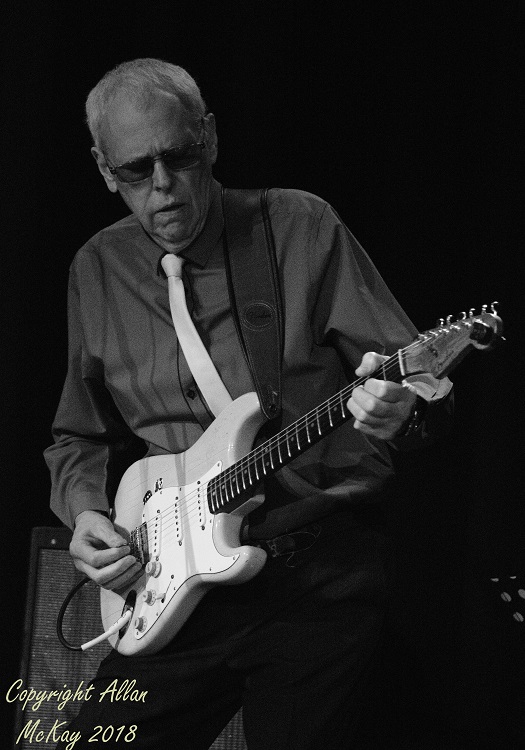
Talentbanq @The Shard
I mentioned Talentbanq earlier. If you go to gigs in some of the cosier venues in London, you’ve probably heard of Talentbanq. For those who haven’t, it’s an organisation promoting unsigned acts across London and it’s fronted up by Ray Jones, formerly of Time Out magazine. There are two things you need to know about Ray – he knows everyone in hospitality and the media in London and he’s fanatical about live music. Just the person to organise the first open-air live music performances at the top of the tallest building in Western Europe.
And the opening day, August 4th, was an absolutely perfect summer day in London; no clouds, brilliant sunshine and perfect panoramic views over London from a height of nearly 250 metres. It was an honour and a privilege to be there, watching incredibly talented artists playing to people who had no idea that live music was part of the package.
And just to add a bit of interest, Julia Gurry, from the incredible Belle Roscoe, announced in the Green Room, just prior to performance, that she was terrified of heights. She still did the show and here’s the evidence:
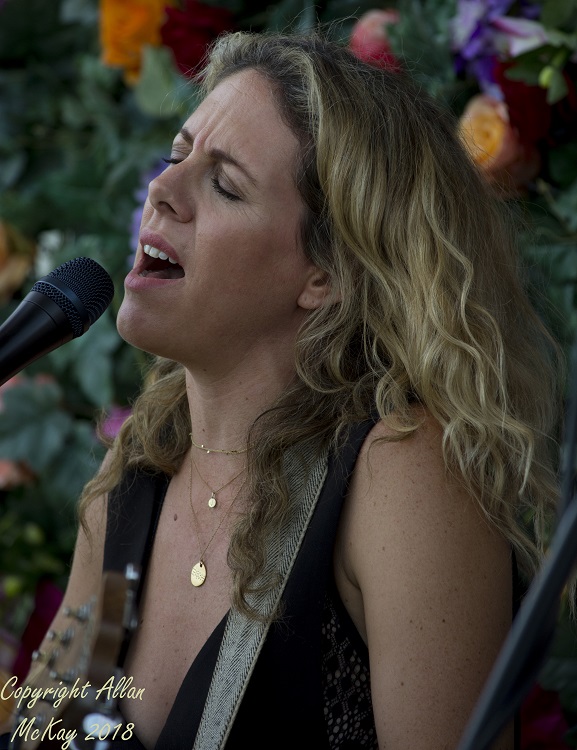
Claudia Fontaine tribute gig
Gig photography; it’s really specialised and you would imagine it must be incredibly competitive. My experience is that, unless the tabloids are involved, there’s a huge amount of mutual respect between gig photographers. Most of us are doing this because we love it and we respect that motivation in others. Take a look in the photo pit next time you’re at a gig and you’ll see camaraderie and mutual respect; gig photographers will congratulate each other on great shots; it’s a privilege to be a part of that community.
That’s a long-winded introduction that partly explains why I was invited to photograph an event this year where Annie Lennox made a guest appearance. The photo gig should have gone to the fabulous Emma Jones but she couldn’t make it and recommended me as a replacement (see, told you we look after each other). The gig was a tribute to the late Claudia Fontaine (just Google the name; you’ll be amazed) and Annie had agreed to appear. We did all of the megastar liaison about photographic restrictions and eventually came up with shots that Annie was happy with. Unfortunately, for contractual reasons, I can’t illustrate this with an Annie Lennox photo, but I hope this pic of the wonderful Beverley Skeete works for you:
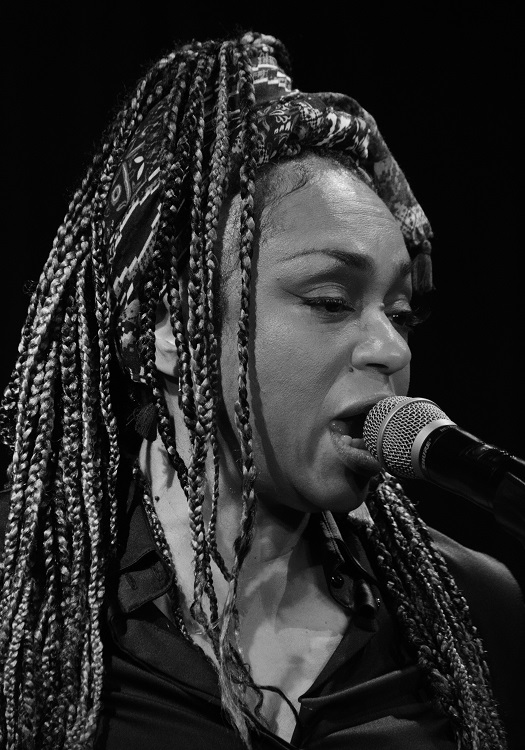
Stone Foundation with Paul Weller, Kathryn Williams and Graham Parker
You may have noticed the occasional mention of Stone Foundation in my random typings. I’m a huge fan and I’m not alone there. They’ve attracted a lot of celebrity attention from the likes of Robert Elms and Craig Charles and from musicians including Dr Robert, Graham Parker and Paul Weller. When they announced a tour in November to support the latest album “Everybody, Anyone”, I was at the front of the queue for tickets; the photo pass was a bonus. No three songs and out this time; the pass was for the whole gig, so something special was happening. There was a bit of a clue when Derek D’Souza (long-time Weller photographer) showed up in the pit (no egos, mutual respect and handshakes all round).
So, to cut to the chase, Kathryn Williams supported (along with Michelle Stodart) and during Stone Foundation’s set there were guest appearances from Kathryn Williams, Paul Weller and Graham Parker. Apart from the really obvious stuff like the band doing “Tear Your Playhouse Down” with Graham Parker, I have no memory of the gig. I do have a few good pix:
